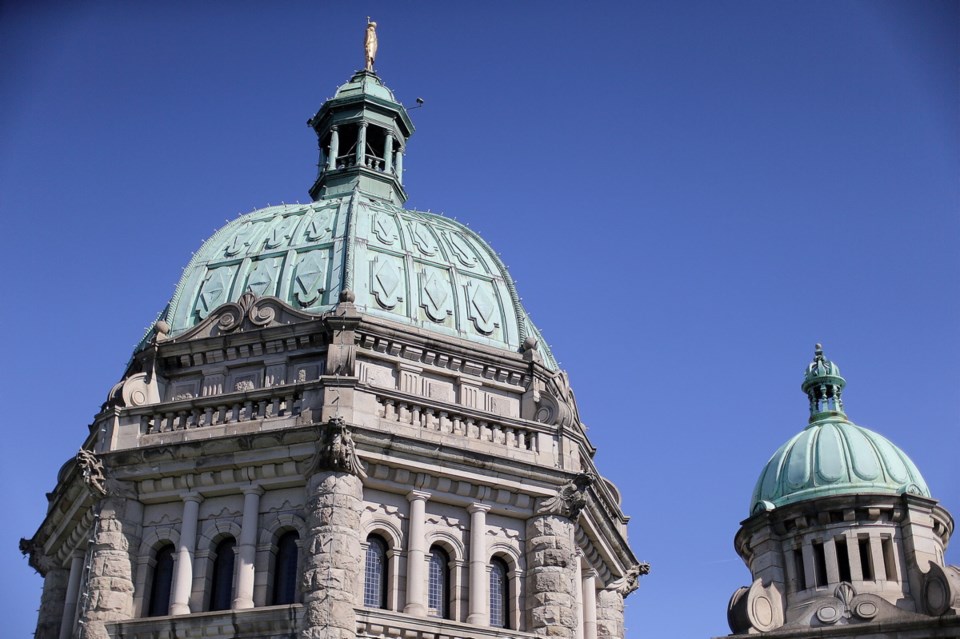Sometimes you just have to look the gift horse in the mouth.
Like when the first gift horse suddenly gets replaced with a whole herd of gift horses, with no real explanation offered.
Jobs Minister Ravi Kahlon on Monday announced changes to the circuit breaker business relief fund that amount to a major overhaul - just two weeks after it started taking applications.
The scale of the quick rebuild suggests that it wasn’t properly designed and was too skimpy in the first place.
How else do you explain why a relief program all of a sudden gets 150 per cent more money and the maximum amount available to each applicant is doubled?
It may be based partly on the expectation that the circuit breaker health measures are going to last beyond May 25. But Kahlon wouldn’t discuss that Monday.
So all there is to go on is the original outline, the indications of demand and the contrast with the new version offered Monday.
It went unmentioned at his brief media scrum but figures his ministry supplied later show that the initial $50 million is already long gone. There were 7,500 applications as of Monday and they represented about $70 million in direct grants, the ministry said.
So just over half the 14,000 businesses that were deemed eligible to apply have already potentially used up all the $50 million and then some.
Small wonder it needed bulking up.
After public health measures were tightened on March 30, attention turned to helping businesses that were drastically impacted by new restrictions. Those included the renewed ban on indoor restaurant dining and stricter rules at gyms.
By April 8 they were ready to announce the government’s response. The theme was that the B.C. government was riding to the rescue with the $50 million package.
“Relief funding coming for hard-hit businesses” was the headline on the news release.
Premier John Horgan said: “This grant will provide businesses with the funds they need to get through these extraordinary times.”
The $50 million cited was actually put on the table earlier. It was shuffled over from the $345 million small and medium business assistance program that rolled out earlier as an election goodie. That more general package had a balky start and was considered undersubscribed, at least initially.
A week after the circuit breaker fund was announced there was another splash when it started taking applications. Kahlon said they got 100 in the first hour. That was a sign how heavy the demand was, and perhaps a clue as to how long it was going to last.
The estimate was that 14,000 businesses would be eligible to apply, most of them restaurants, bars, breweries, wineries and fitness clubs. They could get between $1,000 and $10,000, depending on number of employees. It was to run until June 6, or until the money was gone.
On Monday it was bulked up considerably, with $75 million more added. It’s new money, pulled from one of the new budget’s contingency funds.
The maximum grant amount was doubled, to $20,000. Restaurant officials had welcomed the program earlier but noted it wouldn’t begin to cover all the losses that are occurring.
Also, $25 million of the now-$125 million fund is allocated for the hospitality industry.
More than 5,000 hotels and motels are taking a hit from the travel and accommodation booking restrictions announced last week (after the first circuit breaker measures were announced). They are now eligible for help as well.
Kahlon told reporters that the government is “assessing, reassessing and pivoting” every day to ensure businesses have support and funding they need.
“We’re adding $75 million to the original $50 million, bringing the total funding of this grant to over $125 million,” he said.
“That means that the businesses can access double the money.”
Those that qualified for the $10,000 maximum will now receive up to $20,000, he said.
The average grant was first estimated to be $5,000. It will now rise to $10,000.
It’s yet another measure of how much scrambling is underway to cope with the pandemic’s economic impacts, let alone the public health ones. The lesson from this latest round is that it’s hard to overestimate the demand for help. So, go big, or go home.
lleyne@timescolonist.com



